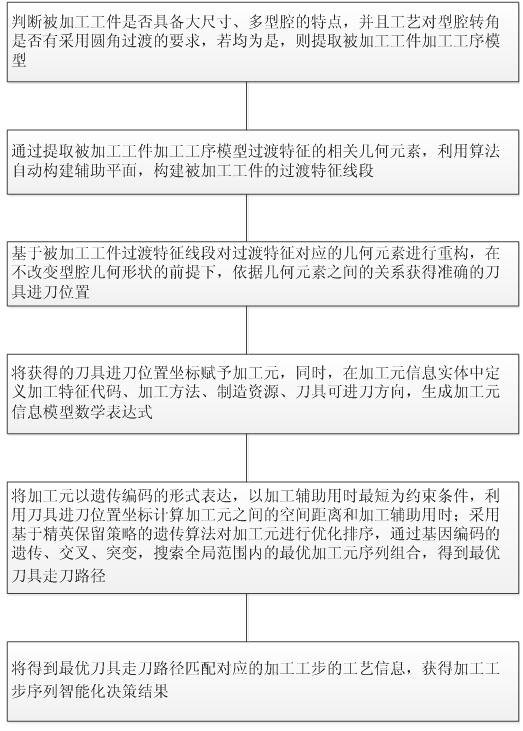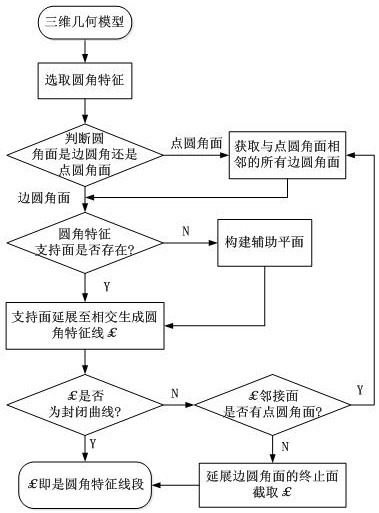A decision-making method for machining step sequence of multi-cavity structural parts based on transition feature simplification
A technology of feature simplification and decision-making method, which is applied in the direction of program control, comprehensive factory control, electrical program control, etc., can solve the problems of low intelligence, no consideration of the influence of transition features, and the scrapping of processed parts to achieve the effect of meeting actual needs
- Summary
- Abstract
- Description
- Claims
- Application Information
AI Technical Summary
Problems solved by technology
Method used
Image
Examples
Embodiment Construction
[0027] The technical solutions of the present invention will be further described in more detail below in conjunction with specific embodiments. Apparently, the described embodiments are only some of the embodiments of the present invention, not all of them. Based on the embodiments of the present invention, all other embodiments obtained by persons of ordinary skill in the art without making creative efforts shall fall within the protection scope of the present invention.
[0028] In order to eliminate the interference of the arc transition surface on the tool path planning, the present invention proposes a transition feature simplification algorithm, which can simplify the transition feature and obtain the tool entry position without modifying the design model. On this basis, combined with the processing element to calculate the spatial position distance between different cavities, the improved genetic algorithm is used to calculate the processing auxiliary time of different...
PUM
 Login to View More
Login to View More Abstract
Description
Claims
Application Information
 Login to View More
Login to View More - R&D
- Intellectual Property
- Life Sciences
- Materials
- Tech Scout
- Unparalleled Data Quality
- Higher Quality Content
- 60% Fewer Hallucinations
Browse by: Latest US Patents, China's latest patents, Technical Efficacy Thesaurus, Application Domain, Technology Topic, Popular Technical Reports.
© 2025 PatSnap. All rights reserved.Legal|Privacy policy|Modern Slavery Act Transparency Statement|Sitemap|About US| Contact US: help@patsnap.com



